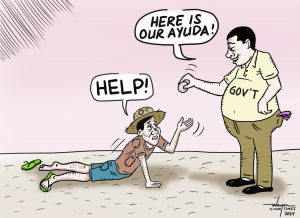Last week, news broke that Filipino students ranked last among 79 countries in a global survey on reading comprehension.
This was a REALITY CHECK that sparked a lot of opinions, unsolicited advice, and commentaries from all over. People began questioning the feasibility of the K to 12 program and many lamented the apparent decline in our educational system. Finger pointing from “experts”, true or otherwise, as to the cause, has been all over news and social media.
As a law school teacher, I must say that indeed there is a lot of truth in the result of the survey. In fact, in a previous article entitled “BIBLIO VICEM VIDEO,” I already wrote about the perceived decline in the language skills of our young people where I emphasized that part of the problem may lie in the fact that the younger generations are more and more reliant on video input instead of reading books. “Video generations,” I called them.
The bottom line is that there is no other way to improve reading comprehension but to get our students to read more.
I remember that when I was in elementary school, one of the staples of our reading classes was using the SRA Reading Laboratory kit. Essentially, these were modules of reading materials or short stories classified into different reading levels where students would take a short quiz after reading each story and, depending on the results, one would steadily progress to the higher reading levels.
Have our schools stopped using this system? It would be sad if this was so because I remember that this was quite effective in instilling the love for reading among students and the resulting competition in getting to the higher levels encouraged the development of reading comprehension skills.
As I have also stated in my previous article, developing the love for reading cannot be confined to our schools because a healthy reading environment at home because is where what I would call “recreational reading,” or reading for the pleasure of it, rather than the “forced reading” of academic materials, should be cultivated.
Again, I was quite lucky to have grown up in a home where both parents were avid readers and where there was never any lack for reading materials from comics to the classics.
Of course, this is not true for many, if not most, of our young students. It is a sad reality that there are many who even struggle to afford schoolbooks much less other reading materials.
Maybe, this is part of where the government can help by improving the quality and availability of public libraries as well as connectivity to the Internet. As a caveat, however, Internet connectivity is a double-edged sword. While it offers a doorway to vast resources for good reading, I also see it as the primary culprit in tempting students, as well as many “adults” with wasteful, yet entertaining, distractions.
Giving a teenager access to the Net will more likely result to posting finger heart selfies on Facebook, watching cat videos on YouTube, or worse, rather than the absorption of meaningful learning.
Through all this worrying about what to do with our students’ lackluster reading comprehension, I ask, “Has anyone thought to check our teachers’ reading comprehension levels?” I mean the spring cannot rise above the source so if teachers themselves are not reading as much as they should, how can we expect them to inspire their students to do so? Maybe, we should ban teachers from posting selfies themselves.
Whatever the case may be, again, it cannot be underemphasized that to learn reading comprehension, the solution is to READ, READ, READ and then READ SOME MORE.


